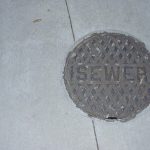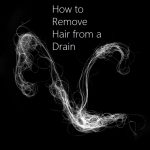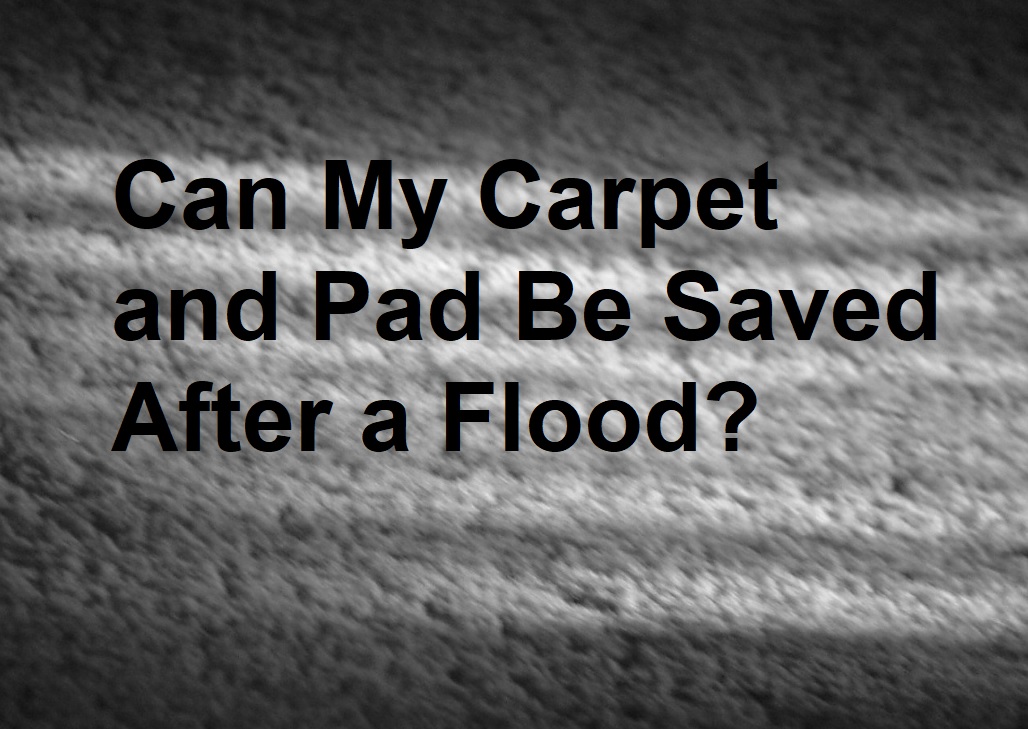Many property owners find this task overwhelming to look at the carpet and pads for any damage, especially after a flood. Carpeting represents such a huge investment that people cannot afford to replace it altogether. Nevertheless, it might be necessary in some instances. Usually, you should be able to save carpeting and its pad after a flood incident if a proper approach is used with professional help. This comprehensive blog on carpet and pad will help you understand if yours is reusable, the kinds of floodwater, or the steps you may take to revive your kind of flooring.
Understanding Flood Types and Their Impact on Carpets
Not all floods are created equal, and the type of flood water that has affected your carpet makes all the difference in whether it can be saved. Here are the three categories of flood waters that can affect your carpet at home:
Category 1 (Clean Water)
This type of water comes from a sanitary source, such as a broken water supply line or rainwater. Carpets affected by clean water have the best chance of being saved if addressed quickly.
Category 2 (Gray Water)
Gray water contains some contaminants and can cause illness or discomfort if you ingest. The common sources include washing machine overflow, toilet overflowimg with no feces, and failing sump pump. Carpets affected by gray water may be salvageable but you require professional cleaning and sanitization.
Category 3 (Black Water)
Experts reveals that black is one of the most dangerous type of flood water as it contains pathogenic agents, toxic materials, or other harmful contaminants. The common sources include sewage backups, river flooding, and standing water that has begun to support microbial growth. Carpets and pads affected by black water should always be replaced for health and safety reasons.
Factors Affecting Carpet and Pad Salvageability
Besides the type of floodwater, several other key factors can influence whether your carpet and pad can be successfully restored after water damage. Let’s look at these factors that affect carpet and pad salvageability:
Age and quality of the carpet and pad
The age and overall quality of your carpet and pad play a significant role in their ability to withstand and recover from water exposure. Newer, higher-quality carpets and pads come with durable, water-resistant materials that make them more likely to be salvageable compared to older, lower-quality options. Older carpets may have degraded fibers and backing that are more prone to permanent damage when saturated with water. The padding underneath is also more likely to break down and lose its ability to provide cushioning and insulation. In contrast, newer carpets with stain-resistant treatments and reinforced backings can often be dried, cleaned, and sanitized to like-new condition, even after significant water exposure.
Installation Type
The way experts installed your carpet and pad can also impact the restoration process and the chances of saving them after a flood. Carpets that were glued directly to the may be more challenging to remove and dry compared to those installed using tack strips around the perimeter of the room. Tack strip installation allows the carpet to be lifted more easily. Direct glue-down carpets often require more extensive work to remove, and the adhesive can make it harder to fully dry the carpet backing and padding.
Duration of Exposure to Water
One of the most critical factors in determining whether a flooded carpet can be saved is the length of time it has been exposed to water. The longer the carpet and pad remain saturated, the greater the risk of permanent damage, mold growth, and other issues. Ideally, the restoration process should begin within 24-48 hours of the initial water exposure. This allows for the fastest possible drying and minimizes the chances of mold growth or other secondary damage. However, if the carpet has been wet for an extended period, often a week or more, the likelihood of successful restoration decreases significantly, and replacement may be necessary.
Presence of Contaminants
Besides the duration of exposure, the presence of contaminants in the floodwater can also impact the salvageability of your carpet and pad. Clean water from a broken pipe or minor leak is easier to deal with than water contaminated with sewage, chemicals, or other hazardous materials. Contaminated water can leave behind harmful bacteria, viruses, and other pollutants that can be difficult or impossible to remove from porous materials like carpet. In these cases, you’ll need to replace the padding and the carpet may require more extensive cleaning and disinfection to ensure it’s safe for occupancy.
Can My Carpet and Pad Be Saved After a Flood?
The reason your carpet and pad can still be saved in case of a flood depends on the category or type of the floodwater, duration of exposure, and age and quality of the material. If the nature of the flood was caused by clean water and the carpet has not been underwater for more than 24-48 hours, it can be saved by proper drying, cleaning, and sanitizing procedures. In cases where the floodwater may be contaminated (Category 2 or 3 or if your carpet has been soaked for too long) it may be necessary to replace it. Once more, restoration by professionals is quite important, since they’ve got rhe expertise, equipment, and protocols for assessing damage and mitigating further problems in regard to mold growth.
Stepwise Guide on the Restoration Process
In the event that upon inspecting your carpet and pad, you find them salvageable, restoration steps will have to ensure proper cleaning, drying, and sanitizing procedures for the affected areas. This process is important in removing all the contaminants, which permit avoidance of further mold growth and restoring your carpet and pad to a safe and healthy condition. What are the best restoration procedures? Let’s look at each restoration step in detail:
Water Extraction
As much standing water as possible should be removed from the carpet and pad with professional extraction equipment normally very strong truck-mounted or portable extractors that are capable of pulling the water from deep within the carpet fibers and padding can help. Why is the process important? This extraction is important to reduce total square-footage, drying time of carpet and pad, and therefore potential mold and mildew growth from standing water. More specifically, experts construct extractors to remove water far better than a household vacuum cleaner or by any other do-it-yourself method so that the drying process is able to start right away.
Drying
Drying of the carpets, pads, and subfloors has to take place after the extraction of standing water. Negative aeration fans and dehumidifiers specifically designed for water restoration exercise the drying process. Professional drying equipment is capable of exposure to high-energy airflow that Robotics – removes vast amounts of moisture from the air to accelerate the drying process. The technicians will have, in a strategic manner, set up fans and dehumidifiers throughout the affected area to ensure that all surfaces become exposed to the drying air. Also during this step, the technicians will monitor the moistures in the carpet, pad, and subfloor using specialized meters. .
Cleaning and Sanitizing
Once the carpet and pad are dried, cleaning and sanitizing of the affected areas must occur. Special cleaning solutions and methodologies help remove the contaminants. It helps avoid future growth of mold and mildew. Most technicians will use a mix of hot water extraction and chemical cleaning products to deep clean the carpet fibers and padding. This will remove any remaining dirt, debris, or contaminants that may have been introduced by the floodwater. Moreover, they’ll sanitize the carpet with EPA-registered antimicrobial agents besides being cleaned. Such solutions can kill bacteria, viruses, or fungi which probably constituted part of the floodwater.
Deodorizing
Once the carpet and pad have been thoroughly cleaned and sanitized, the next crucial step is deodorizing. Lingering odors resulting from floodwater contamination must be addressed to restore a fresh, pleasant scent to the carpet. Experienced technicians will apply specialized deodorizing agents that work to mask and neutralize any unpleasant smells. This process is essential for ensuring the carpet is safe and comfortable for occupancy, as the deodorizers help eliminate odors that could otherwise persist even after the other restoration steps.
Reinstallation
By now, with the carpet and pad cleaned, dried, and sanitized, you’re more likely to reinstall it. For example, if the carpet had been glued down, it may simply have to be re-glued to the subfloor. If the carpet had been installed using the tack strips, then the technicians may be required to re-stretch the carpet and attach it onto those strips. Proper reinstallation is important to keep the carpet in place and to ensure continued appearance and performance. Special tools and techniques are applied so that the carpet will be properly aligned, stretched, and secured by the technicians to the subfloor or tack strips.
Preventing Future Flood Damage
Although you can’t eliminate the risk of flooding, homeowners can take some proactive measures to reduce resultant damage and expedite recovering from a future flood. These preventive strategies will help protect home investments, families’ well-being, and general stress and disruption caused by a flood. Here are some ways to help you prevent further flood damage:
Install a Sump Pump
Sump pumps may be among the most effective means of preventing basement or crawl space flooding. These devices are fitted with sensors that monitor any increase in groundwater levels and automatically switch on to start pumping out excess water. Sump pumps can significantly reduce the potential for flooding. They work by continually pumping water from an area close to a home’s foundation in the heaviest rainfall or fastest snowmelt. Routine maintenance and testing of the sump pumps should be conducted to ensure they are operational. This would include cleaning of the pump inlet, checking for rags and other debris that may be lodged within the device.
Seal Cracks and Holes
Foundational and exterior walls of a home can, over some time, crack or develop holes from settling, weathering, or other means that can let water in and causein-house flooding. In preventing such a scenario, homeowners should keep a check on the foundation and exterior walls periodically for any signs of damage or deterioration. Homeowners should check for any cracks or holes and seal them with a good concrete- or masonry-specific sealant or epoxy. In other cases, more extensive repairs are necessary, such as replacing damaged bricks or mortars. Very few instances of water intrusion leading to flooding will occur in those homes where the owners address these problems before they can become major issues.
Elevate Electrical Components
Electrical outlets, switches, and wiring mounted low to the floor are easily damaged by water in case the floor floods. In protecting such principal components, it’d be good to raise them at least 12 inches above the expected flood elevation. You can accomplish this by moving the outlets and switches to higher areas or mounting them on a raised platform or wall. Aside from raising electrical equipment, the owners should ensure that the electrical system of their houses is well-grounded and in good wiring. This will help detect any problem early enough and ensure that your electrical system at your home is up-to-date to be current with recent flood-resistant experts.
Consider Flood Insurance
Even with preventative measures in place, there is still the possibility of a flood occurring. So they don’tlose their investment in their home and, oftentimes, so many personal belongings, at least some form of flood insurance should be considered a worthy purchase. In most cases, conventional policies on home insurance do not include flood insurance, but it can cover the costs of repair and replacement of items that were ruined. Very few general flood insurance policies come into effect immediately; hence a homeowner should ensure that the purchase of coverage is made well ahead of time in respect to the flood season or an impending weather event.
Develop an Emergency Plan
An emergency plan in the event of a flood makes quite a difference in keeping a family safe and sound. Such a plan should include information on the place to go in case of an evacuation, essential things to bring along, and how the utilities like electricity, gas, and water can be safely turned off. Homeowners should also fashion a flood kit featuring principal supplies like non-perishable food, water, first-aid kits, flashlights, and batteries. Having all these things within a finger’s reach allows families to be ready to respond the best way possible during a flood. Listening to these preventive measures and making sure they’re implemented entails that a homeowner can take preemptive steps to engage in minimizing the risks and impacts of any future flood event.
DIY vs. Professional Carpet Cleaning
Even though you may be lured by the idea of DIY cleaning and drying the carpet in case it floods, it doesnt come with many advantages. You could extract water on your own; however, professional cleaning services offer a more practical solution in such a situation. Professional restoration services are equally called for in repairing damage from a flooded carpet as opposed to efforts at DIY repairs. While the upfront cost might be a little more, the long-term positive results and literal peace of mind from professional restoration far outweigh any possible savings from a DIY effort.
Moreover, restorers have special knowledge and the proper advanced equipment and techniques for complete drying, cleaning, and sanitizing of the affected area against secondary damage and health hazards. This makes them very effective and fast, reducing the time taken for restoration and therefore enabling the householder to return to his/her daily life sooner. Besides the above advantages, it helps professionals display their work according to strict industry standards and following safety measures. Its key as it helps ensure that due care is taken with respect to contaminants, carrying out the securing of the work area against mold growth, etc.
Conclusion
Flooding damaged carpets can be difficult and frustrating to handle. In some cases, you could save the carpets, particularly those damaged by clean water, and if you act quickly, however, most scenarios arising because of floods definitely do involve carpet replacement. Quick action, proper damage assessment, and in most cases, professional restoration services are often keys to ensuring you have the best chance of saving your carpet. Remember that your health and safety must come first at all times. Never hesitate to ask for professional advice from the experts, as they are best placed to offer you relevant advice regarding whatever scenario pertains to you. By understanding the factors involved with carpet flood damage and restoration, you’ll definitely be better placed in making informed decisions if you find yourself fighting this unlucky scenario.
Reach out to your local plumbing company to get help with you flooding damaged carpet.





